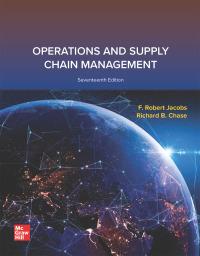In each of the following, name the term defined or answer the question. Answers are listed at
Question:
In each of the following, name the term defined or answer the question. Answers are listed at the bottom.
1. Logic used to calculate the needed parts, components, and other materials needed to produce an end item.
2. This drives the MRP calculations and is a detailed plan for how we expect to meet demand.
3. Period of time during which a customer has a specified level of opportunity to make changes.
4. This identifies the specific materials used to make each item and the correct quantities of each.
5. If an item is used in two places in a bill-of-materials, say level 3 and level 4, what low-level code would be assigned to the item?
6. One unit of part C is used in item A and in item B. Currently, we have 10 As, 20 Bs, and 100 Cs in inventory. We want to ship 60 As and 70 Bs. How many additional Cs do we need to purchase?
7. These are orders that have already been released and are to arrive in the future.
8. This is the total amount required for a particular item.
9. This is the amount needed after considering what we currently have in inventory and what we expect to arrive in the future.
10. The planned-order receipt and planned-order release are offset by this amount of time.
11. These are the part quantities issued in the planned-order release section of an MRP report.
12. The term for ordering exactly what is needed each period without regard to economic considerations.
13. None of the techniques for determining order quantity consider this important noneconomic factor that could make the order quantity infeasible.
Step by Step Answer:

Operations And Supply Chain Management
ISBN: 9781265071271
17th Edition
Authors: F. Robert Jacobs, Richard Chase





